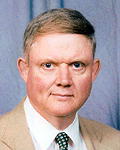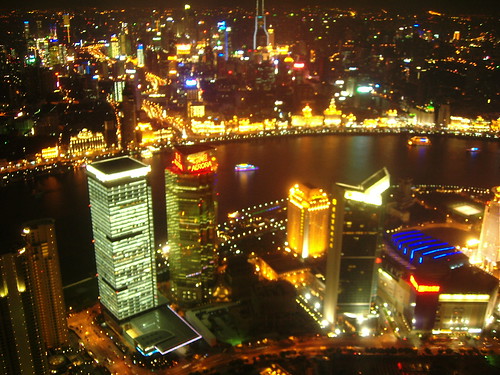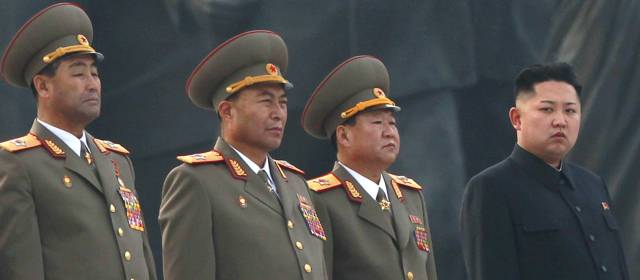AN INTERPRETATION BY FIELDMARSCHAL ERICH VON MANSTEIN.
(CONTINUATION)
Results of the German counterattack and its trascendence.
Nevertheless, the booty gained was scanty. Von Manstein declared that there were approximately 23,000 dead Soviet soldiers and 9,000 captured Soviet soldiers. The materiel captured were approximately 615 tanks (probably largely recovered), 354 campaign guns, 69 anti-aircraft pieces and more than 600 machine guns and mortars. It was not possible to encircle the enemy and Soviet soldiers took advantage of this by leaving the heavy equipment and retreating. Von Manstein said that, because the extreme cold, his soldiers were bunched into small, tight groups, leaving wide spaces and lines in his rearguard, without effective cover. This partly happened because they were elite troops and because the war was without mercy.
 COLONEL JOHN BOYD, AN AMERICAN TEORIST OF ITS MANEUVER THEORY.
COLONEL JOHN BOYD, AN AMERICAN TEORIST OF ITS MANEUVER THEORY.
At the beginning of March, 48th panzer Corps pressed toward the east of Kharkov and the SS panzer corps of General Halder was entrusted with recovering the long-suffering city for the Germans.
At the middle of the month, the Germans had a defensive resistant front from Tangarov to Belgorod, supported on the Mius and the Donetz. They also possessed in the south of Russia sufficient mobile reserves to push back possible Soviet operational breaks in the zone.
As late as 1944, the Soviets had 26 tanks Corps and 11 mechanized Corps. Part of them joined together to form 6 tanks Armies. Each of which had two tanks corps and a mechanized corps (bigger and more balanced inn infantry and artillery). Some mechanized Corps joined a cavalry Corps, forming a great unit similar in capacity to the tanks Army but with fewer armored vehicles and more mobility in areas of difficult transitability (marshes, mountains, woods). These were used to exploit the break in the swampy areas of the south of the Soviet Union, as that of the Pripet river in the north of Ucrania. Although never coexisted more than two or three in the order of battle of the Soviet Army.
 WILLIAM LIND, A CIVIL TEORIST.
WILLIAM LIND, A CIVIL TEORIST.
The destruction of 6 tanks Corps of the Southwest Front (especially equipped with mobile forces) and dismantled them from their “support masses”, was an especially prominent, profitable and low cost operation for the Germans.
In addition, in its advance toward Kharkov between March 1st and 5th, the SS and 48º panzer Corps smashed from its flank and rearguard the Soviet 3rd tanks Army, led by general Pavel Semjonovic Ribalko. This Army was launched to relieve the forces of 6th infantry Army and had continued advancing toward Kharkov. This city that was by then, attracting all the attention and efforts from both sides.
As poor results and large losses mounted for the mobile Soviet forces, pessimism also grew in Stalin, who asked Sweden to mediate in seeking a solution to the war with Germany.
Nevertheless, the advance on Belgorod, outlining Kursk’s projection inside the territory occupied by Germany, sealed the aim for Germany’s strategic summer Campaign. After all these events had passed, the strategic initiative returned to the Germans at the level of the theatre of operations.
But, beginning on July 5, delayed in relation with the victories of Von Manstein, their action gave the Soviets time to extensively strengthen themselves, to establish “fortified regions” at the front level, and to assemble and organize a powerful counterattack force in the north and south of the projection. The allied landing in Sicily on the 10th of July, aborted the Wehrmacht’s already disastrous Operation Citadel. The Germans would never recover the strategic initiative on the Eastern Front.

Was it possible to avoid what happened to the Popov group and, thus, to the Soviet’s strategic plans for its 1942 winter campaign and to the Soviet’s strategic initiative, at least in the Southern theatre of the Soviet Union?
It was possible.
We have observed, in parallel and in a very second plane with some key facts, the getting absorbed (to get very much in …), the delight (to be delighted with …) and the fixation (to do without other rational arguments) of Stalin, in relation with the results that he promised himself with the impelled operations by the mobile corps of the Southwest Front of general Vatutin.
General Vatutin, one of the best field chiefs of the Soviet army, died before his time at hands of Ukrainian (anti-Soviet) guerrillas, only participated in this in a minor degree. Still, the delegate of the Stavka in charge of these crucial operations (Zhukov, Vasilevsky?) remembered him the transcendence that for the Supreme Commander and for the Soviet people they had.
A little time ago, Hitler also fixated on Stalingrad. This fixation led him to squander the capacity of his best Great Unit (the 6th infantry Army of general Paulus—yes, without the aristocratic Von) in a street struggle and a force-to-force confrontation. Their enemies were arranged on a static defense. A position that they were better able to defend and maintain than were the Germans, in the gigantic steel and cement fortress that was Stalingrad.Fight in which was not counting the German superb capacity of operational movement, which reduced the effort done to a confrontation between man vs. man and machine against machine. And, thus, causing a terrible attrition to the combat and movement capacities.
We can discuss about the strategic mistakes of high chiefs. As the line of communications (branched out) is so crucial, it is necessary to protect it adequately. But this fact is obscured and blurred by the desires of commanders.
What are the possibilities of defense for the advance sector that contains the communications line?
Independently of the advance deployment of mobile groups and their support mass (which must include the securities elements adapted for marches in enemy areas), «advanced detachments» must be brought forward.
These will be integrated by 15-30 % of the forces that bring them forward and will possess sufficient operational movement and combat capacities. The time it takes for the main group to join them is a function of the transitability of the terrain and of the capacities and intentions of the enemy in the operations zone. Its mission in defensive operations is to be used as “stable hinges” between the deployments of Great units, facilitating and protecting the movement of forces and supplies between them.
If the mass of support is too slow for the mobile group to continue advancing at a reasonable rate, it will end up lengthening dangerously the distance between the units and their support. This situation is very vulnerable to a mobile assault by the enemy from the depth of his zone and the sector of advance would be under threat of being cut, depending on the means and intentions of the enemy. This probability would require that a “mechanized group” be placed between the mass of support and the mobile group to reduce the distance between all three deployments and reducing reaction times to respond to a crisis. This would reasonably stabilize the sector of advance after the mobile group.
The mission of the mechanized group, which has less capacity for operational movement than the mobile group, will be to carried out the “sector mobile defense”. And will last until the forces of the mass of support arrive to relieve it. The anti-aircraft and antitank defense plan, the centralization of reserves and the defense of key points of the area, by means of “delay positions” and together with necessary heavy fire support, will be characteristic of the fight to stabilize the sector.
That is to say, it is necessary to sacrifice speed for safety to consolidate the stability of the sector of advance in enemy territory. A territory that does not need to be all occupied in force. Because would be defended by a mobile defense for a limited period of time. Taking disproportionate risks would be reckless and would put men, materiel and the operation in danger.
But, men (in this case, Hitler and Stalin are two examples) continue to make mistakes when faced with such circumstances…
THE END.
 KIM IL SUNG, THE FOUNDER OF THE DYNASTY.
KIM IL SUNG, THE FOUNDER OF THE DYNASTY.

 ECONOMIC DEVELOPMENT IN CHINA.
ECONOMIC DEVELOPMENT IN CHINA. A FORMER NATIONAL DEFENSE COUNCIL…
A FORMER NATIONAL DEFENSE COUNCIL…